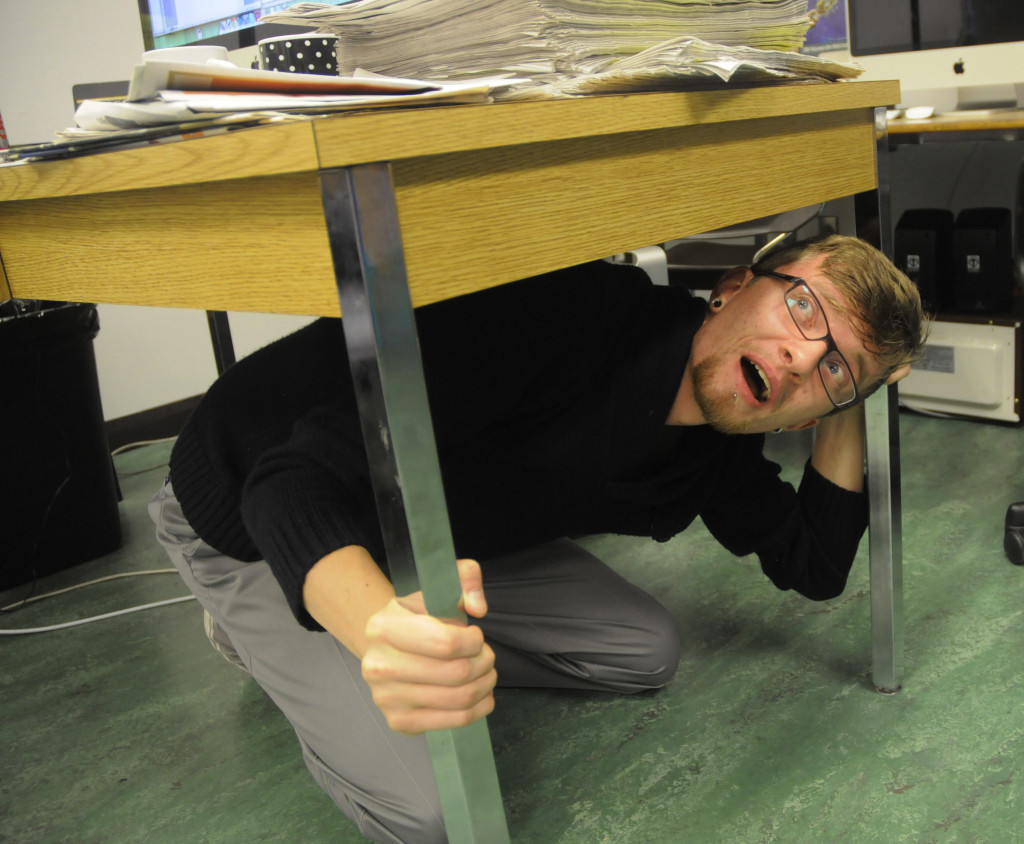British Columbia prepares for ‘the Big One’
By Elliot Chan, Contributor
Vancouverites sure are a whiny bunch. There’s never not something for us to complain about: it’s always raining, the traffic is bad, and it costs way too much to live here. We could go on and on, but it’s not until tragedy comes along that things are put into perspective.
For years now, citizens of the Pacific Northwest have been warned about “the Big One,” an impending catastrophic earthquake with no equal in recent history. Caused by the Cascadia subduction zone, an area off of the west coast where two tectonic plates meet. The movements of both plates force one beneath the other, causing tension to build up beneath the earth. When the tension is finally released, it will generate the most devastating of earthquakes, known as a megathrust.
There have been 15 megathrust earthquakes recorded in human history; the most recent being the 2011 9.0 magnitude in Japan. The Japanese were recognized for their earthquake preparations, but after watching their coastal towns get wiped away by tsunamis, we must turn the lens on ourselves and ask how properly equipped we are for a disaster of equal or greater proportion.
Give us 100 years and we still won’t be able to build an earthquake-resistant city. What we can do is apply our knowledge and preparation and create a system that will lessen the effects. Mitigation, preparedness, response, and recovery are the four pillars of earthquake readiness.
The Shake Out
The first Great British Columbia Shake Out was held last year on January 26, in memory of the earthquake that struck BC on the same day in 1700. The Shake Out is a province-wide earthquake drill, where participants practice and demonstrate safety procedures. Possibly receiving publicity from the ominous nature attached to the year 2012, the Shake Out has enjoyed a surge in exposure for its second outing. The British Columbia Shake Out will take place on October 18 at 10:18 a.m. So wherever you are at this time, take a moment to test your reaction and comprehension of a safe earthquake protocol.
Douglas College is amongst the 18 post-secondary institutions participating in the drill this year. A committee of local, provincial, and federal governments, as well as private sectors and non-governmental organizations are responsible for organizing the Shake Out. This committee is in charge of spreading earthquake awareness to the apathetic masses. Although they are unable to predict when a damaging earthquake will strike, experts agree that there is a 1/3 chance of one hitting in the next 50 years, the same odds as contracting a heart disease (stroke, diabetes, etc.) So, along with eating healthy, getting plenty of sleep, and exercising, we must also be prepared for earthquakes.
Captain Brock Henson, the Emergency Program Officer of Saanich, informed The Other Press that on the 18th, over 100 different drills will be conducted by different organizations and first response agencies. Speaking on behalf of the fire departments, Henson stated that these earthquake procedures include getting the fire truck out of the hall, insuring that communications are running, and inspecting the building for safety and capability for operation. From there, many untraditional emergency drills will be conducted.
The Quake
The severity of earthquakes is one of the many things Vancouverites neglect, though I can’t blame them. We can’t necessarily live our lives anticipating disaster, but it’s reckless to be ignorant—especially after we’ve been given extensive warning.
Earthquakes are nature’s most violent fits. The best strategy is far from heroic: the drop, cover, and hang on for dear life method.
Common myths advise you to seek safety beneath a doorway or run outside. In the occurrence of a megathrust, however, these methods are regarded as unsafe. In many modern buildings, doorways are no more soundly structured than any other part, while it’s been proven that falling objects inside buildings more often injure people than the buildings themselves.
If you are in a room without any immediate shelter, do not flee. Instead, crouch down in the corner for stability and cover your head and face. If you happen to be outside, quickly find an open area without power lines or buildings. If you are driving, pull over and remain inside the vehicle. The key points to remember during an earthquake are: if you are inside, stay inside; if you are outside, stay outside; and avoid anything that may break or fall.
The Aftermath
So you survived the upheaval, but the crisis is far from over. After the noise and quiver of the first shake, be ready for an aftershock that could occur anywhere from minutes to days after. Until then, follow the safety procedure and exit any building, assuming it is damaged. Any structure built before 2005’s strict earthquake code or ones that haven’t been subjected to seismic upgrades are seriously at risk of collapsing. Vancouver has over 8,000 buildings considered vulnerable, should a seismic attack hit.
Expect to be on your own without any emergency response for the next 72 hours after an earthquake. Electricity and telephone reception, both landline and cellular, will most likely be down. If communication has not been completely severed, Henson wants people to refrain from making phone calls. For those who need to communicate, sending text messages is the best means for contacting others.
Different areas of the Lower Mainland will suffer different consequences following the earthquake. Congested areas like downtown Vancouver will be isolated, as all bridges will be closed. Don’t consider driving or traveling far either, as the city will be one big construction site—what else is new though?
Although, the Lower Mainland is not a high-risk tsunami zone, coastal areas should still be avoided. All the while, Vancouver Island and Northern BC should take tsunami precautions. Waves have been known to hit land within minutes after the initial shock. The best way to prepare for such a crisis is to be knowledgeable about your surroundings. After an earthquake, experts estimate that citizens only have 10 minutes to get to higher ground, preferably 15 metres above sea level.
In the Lower Mainland, communities in Richmond, Delta, and the Fraser Valley built at sea level will be at the greatest risk. The soft, swampy foundation will cause flooding and soil liquefaction. Mitigation is the main defense; from there, the city can only hope that the structural standards and regular dike inspections are protection enough from the inevitable.
In all the scenarios, it is important to locate proper necessities, both medical and sustenance. No one should be complacent when it comes to survival gear. Take an afternoon and go stock up with a friend, a co-worker, or a family member. Preparation for an earthquake may seem tedious, but it is your responsibility to ensure as much as possible has been done to prepare. Miracles are not a reality, but earthquakes are. So don’t be surprised if tomorrow the globe stammers and whiny ol’ Vancouver is left speechless.



